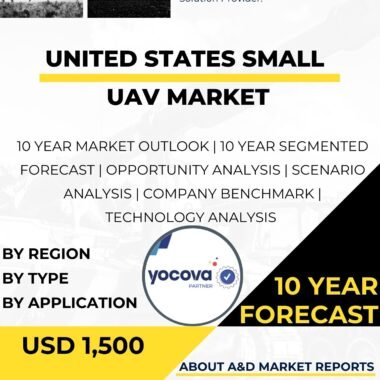Description
South Korea Airborne ISR Market
The South Korea Airborne Intelligence, Surveillance, and Reconnaissance (ISR) market play a pivotal role in safeguarding the nation’s security, providing critical information for decision-making, and enhancing military capabilities. As a technologically advanced nation facing geopolitical complexities, South Korea recognizes the strategic significance of robust ISR capabilities. This article delves into the current state, growth drivers, challenges, key players, and future prospects of the South Korea Airborne ISR market.
The historical context of the South Korea Airborne ISR market traces back to the 1960s when the country initiated efforts to bolster its defense posture amid regional tensions. At that time, South Korea started acquiring intelligence aircraft, marking the initial steps towards developing its ISR capabilities. Over the years, South Korea made significant advancements in ISR technology, transitioning from reliance on foreign imports to the development of indigenous systems.
In the current landscape, the South Korea Airborne ISR market encompasses a wide range of platforms and systems, including unmanned aerial vehicles (UAVs), reconnaissance aircraft, and intelligence-gathering equipment. Key players in the market include Korean Aerospace Industries (KAI), Samsung Techwin, LIG Nex1, and other defense contractors. The market continues to grow at a steady pace, driven by various factors.
One of the primary growth drivers for the South Korea Airborne ISR market is the region’s security concerns, particularly due to the presence of North Korea as a neighboring country. North Korea’s unpredictable behavior and missile development programs necessitate a robust ISR infrastructure to monitor and respond to potential threats effectively. Additionally, South Korea’s ongoing efforts to modernize its armed forces and improve military capabilities further contribute to the market’s growth.
South Korea’s collaboration with strategic allies, such as the United States, also plays a significant role in enhancing its ISR capabilities. Cooperation with advanced defense industries and the exchange of cutting-edge ISR technologies and expertise further strengthens South Korea’s position in the global ISR market.
While the South Korea Airborne ISR market holds immense potential, it is not without its challenges. One of the key challenges is the increasing sophistication of adversarial threats. As adversaries develop advanced counter-ISR technologies, South Korea needs to continually invest in research and development to stay ahead in the technological race.
Another challenge lies in the complexity of ISR data management and analysis. The volume of data collected from various airborne ISR platforms can be overwhelming, requiring advanced data analytics and AI-based solutions to extract actionable intelligence effectively.
Additionally, budget constraints and competing defense priorities pose challenges to the market’s growth. Balancing the allocation of resources between various defense programs while ensuring a strong ISR capability remains a delicate task for South Korean authorities.
Despite these challenges, the South Korea Airborne ISR market is poised for significant growth in the coming years. Advancements in sensor technology, data fusion, and AI-driven analytics are expected to drive the development of more sophisticated and capable ISR systems. Moreover, South Korea’s continued focus on indigenization and the development of homegrown defense technologies will further strengthen its position in the global ISR market.
To achieve long-term growth, South Korean defense contractors and industry players must focus on innovation, cost-effectiveness, and meeting the specific needs of the country’s armed forces. Collaboration with academic institutions and research centers can foster a dynamic innovation ecosystem, enhancing the development of cutting-edge ISR technologies.
Furthermore, integrating ISR capabilities across different domains, such as land, sea, and air, will create a more comprehensive and integrated defense network. This network-centric approach will enhance real-time data sharing and information dissemination, enabling more informed decision-making for defense and security operations.
The South Korea Airborne ISR market continues to evolve and expand, driven by the nation’s security concerns and the pursuit of advanced military capabilities. The country’s historical journey from early acquisitions to the development of indigenous ISR systems demonstrates its commitment to strengthening its defense capabilities.
While facing challenges in the form of adversarial threats and budget constraints, South Korea’s collaborations with strategic allies and advancements in technology pave the way for future growth in the Airborne ISR market. By fostering innovation, integrating ISR capabilities, and investing in cutting-edge technologies, South Korea can position itself as a key player in the global ISR market and further enhance its security and defense capabilities.




